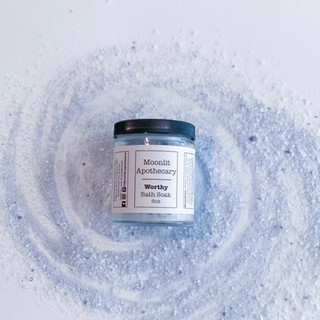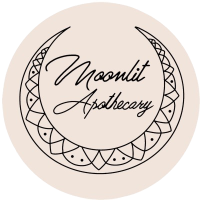Bath+Book Club ‘The Judgment Detox’
- Madison Paige

- May 14, 2021
- 6 min read
Updated: Aug 18, 2021
Okay trigger warning, this book will bring out feelings you have long since buried and hid deep within the depths of your soul. Ok maybe not that intense, or maybe it is, either way this book is extreme. Gabrielle Bernstein is the author of ‘The Judgement Detox’, and she takes self help to a whole other level.
Let me first start off by saying, this book is written perfectly for those of you that might be new to the spiritual/self help realm. I personally love books like these, because they tend to offer a new and fresh perspective that a more seasoned spiritual author might overlook. While we all judge, the reasons can vary, usually its for our safety, or the safety of others. However, sometimes, (a lot of the time) its because we feel unsure of ourselves in the presence of certain person or situation. Oftentimes, when we harbor unresolved traumas or painful events from our childhood they tend to come up later in life in the form of judgment. Luckily for us we have, “The Judgement Detox’, it has all the tips and tricks to fixing that mode of thinking, and help us get back to living by our authentic and true selves.
This book is broken up into six steps where Bernstein thoroughly explains how to break the habit that is judgement. The steps of this process are; Witnessing ones own judgments, without judgment, Honoring the wound, Putting love back up on the altar, Seeing with a greater perspective (new eyes), Cutting the cords, and finally, Bringing the shadows to light. It seems like a lot, and in some ways it can be. In the beginning chapter, Bernstein explains that all judgement really is, is a separation from love. Judgement, like anything, is addictive, it can create false relationships by forming a bond with someone through the judgement of another person. Bernstein explains it in the same way as doing drugs, it might give you a bit of instant gratification at first but when the high wears off your stuck feeling worse than when you started. This process gets repeated over and over until eventually, it becomes a habit, and while habits can form quite quickly the same is not true for trying to break them.
A little more about these steps:
Judging without judgement, in this section Gabrielle asks us to dig up some of the judgments we place upon others and ourselves. She asks us to write them down and really take a min to look into why we feel the need to judge, and where those thoughts and feelings are coming from. Maybe a spouse, a family member, a coworker, the point is at some point everyone faces some sort of trauma that results in them placing judgments on others to mask the pain that is triggered when something similar happens around them. She asks that we take a moment to reflect and write down all of the things we judge on a daily basis. Once this is out on paper we have the opportunity to look at our judgments “face to face”. This not only helps us to identify with our judgments, but to help us see them without shame. This chapter was particularly hard for me, I found myself getting extremely tired while reading, and had to take short naps in between. I realized that when we’re forced to face the feelings that we’ve spent so long hiding from it can take a lot of energy to try and dredge that back up again, and let me tell you, there was a lot of dredging.
The second step was Honoring The Wound, Bernstein has this step down to a science. She walks you through different strategies for trying to accept the judgments we’ve become so familiar with. Once you have your list of judgments (ch 1.) Bernstein asks that we take some time to see just what caused that. Now, some of the things on this list might be easy, but some of them you might look at and have no idea where they came from. When this happens, we use a technique called EFT, or emotional freedom technique. This is a process of repeated tapping movements used to move stagnant energy that causes blockages throughout the body. As Bernstein puts it, “(It) is a psychological acupressure technique that supports your emotional health. EFT is unique in brining together the cognitive believes of therapy with the physical beliefs of acupuncture to to restore your energy and heal your emotions.” (P.58) While this might seem difficult, the process is actually very simple. First you sit in a comfortable position and then just begin to to tap on the designated pressure points while working through phrases that fit your specific feelings around a subject. For the purpose of this book, Bernstein asks us to pick the judgment with the most energy behind it. Pick something that really really gets your fired up. For myself I always find it easier when I jot down a few quick notes about what I wish to tap on. Then, out loud, start by saying things like, “Even though, I am really triggered by this person, I know it is only because____ and fill in the blanks, then repeating said phase over and over until you begin to feel a shift and then move on to the next. Don’t worry, Bernstein gives a bunch of examples, and practice phrases to try for a week or so, to get you feeling very comfortable with the process. I can remember when I was young, we were thought this technique by a church leader as a means of dealing with our teenage hormones. Whenever something felt unfair, or mad us upset, we were thought to deal with our anger via tapping. This process seems “weird” at first but eventually you get use to it, and trust me, it works. For this book, finding the root cause of our judgments and moving through them is the only way to truly resolve them, and while that might seem scary it is completely necessary in the healing process.
Steps three through six are all centered around love, to put it simply. Once we’ve taken the time to work through our judgments, its time to put love back into the equation. The third step is to put love on the altar, this step is all about asking our inner guidance system for support, acceptance, and knowing that we always have the choice to choose again. Step four is about looking at the situation with new eyes. If it is a person you are judging, take some time and try and see them with a fresh perspective. See them as their tiny child self, and give them love and acceptance. Know that they have been hurt in their lives too and are probably doing their best as well. See them with love, accept them for who they are, and give them, and yourself compassion. Step five is about cutting the cords, this is probably my favorite step because Bernstein incorporates meditation, but don’t worry if you’ve never meditated before because she walks you through the entire process, and gives a great intro for using meditation to let go of people and situations. Lastly, Step Six, Bring your shadows to the light. This is a fancy ways of saying that no matter where you are in the judgment detox process, there will always be new challenges to face. Some, might be new judgments and some might be old resurfacing fears. Bernstein, takes us through the process of forgiveness, and how to live in love.
This book can serve as a road map back to yourself. If you find yourself looking in the mirror and unable to recognize the person looking back, this book is for you. It can be hard to accept our faults, and trying to make a change can be difficult but I truly believe that books like these serve as an intimate way for us to help ourselves when we are unable to seek help from others. It may take time, but trust in your intuition and trust in the process, if you intend to make a change the universe will help you to find a way to make it happen.











Comments